“It’s a toyminal,” shouted the voice from the back of the room.
I was moderating a digital panel last week at The New York TimesTravel Show. At that moment, I was projecting a picture I had taken of what I mislabeled as Grand Central Station.
Calling it a station turned out be a major insult to New Yorkers.
This is not a station. It’s isn’t some namby pamby whistlestop. Grand Central Terminal is a terminus — it’s the end of the line where 67 tracks end. Or begin. Grand Central is, by number of platforms, the biggest, baddest railway station in the world. As many as 750,000 souls visit it daily. That’s a lot more than hit Disneyland.
This weekend Grand Central celebrates its 100th birthday. It’s the Grand Central Centennial.
Grand Central Terminal doesn’t just signify a physical beginning and end. It is a mirror of American technologies, triumphs and fears.
When it began life on February 2, 1913 as Grand Central Station, — that is in fact what it was called then — it was a tribute to the miracle of electricity. Grand Central showed that off by festooning its giant chandeliers with bare light bulbs.
Today, some 30,000 bulbs need changing each year at Grand Central.
Deep underground, there is a once top-secret sub-basement known as M42. It contained the AC to DC converters that were used to power New York’s massive electric train set. Now it’s all solid state, of course. But the originals were mechanical — with rotating coils and armatures.
During World War II, armed guards stationed there had shoot-to-kill orders against intruders. That’s because sabotaging the devices could have halted troop movements on the East Coast.
The FBI reportedly arrested two German spies before they could do their dirty deed, which might have been accomplished by simply tossing a pail of sand into the works.
In 1957, after the Soviets launched Sputnik and America dived under its collective schooldesk, officials poked a hole into the ceiling to accommodate a Redstone missile. That was as a show of US might.
Until 1964, CBS television broadcast the following to the hinterlands from Grand Central: Douglas Edwards and the News, Edward R. Murrow’s See It Now as well as the long running show What’s My Line with its panel comprised mostly of elite New York socialites — and, once, the mother of ed director Gina Smith, then Sladjana Djuran. (ed : )
What are the odds of that?
Shortly after the September 11, 2001 World Trade Center attacks, officials hoisted a huge American flag to the ceiling. It will probably remain there — removing it would likely cause a political firestorm.
And now? And now?
Just allow your eyes to drift upward from that iconic gold clock — the symbol of Grand Central Terminal,. It’s atop the information booth. That clock with four sides carved in opal is valued by Sotheby’s and Christie’s auction houses at between $10 and $12 million US dollars.
Photo Credit: Russ Johnson
That’s it, you spotted it.
Looming large at the top of the grand stairway (modeled after one at the Paris Opera House) is a newer icon, to some of American ingenuity, to some a golden calf.
Even Apple has taken a bite out of the Big Apple’s most famous landmark. In 2011 the Wall Street Journal reported that New York’s Metropolitan Transport Authority bought up the lease of a restaurateur for $5 million to make a 10-year deal with Apple for 23 thousand square feet. Above the bustle of the main concourse, dozens of mostly men hunker in revolutionary posture over Apple iMacs, Apple iPads and Apple iPhones
Neanderthals have a bad rap for being hunch-backed, but this notion might have sprung from one arthritic fossil. The Grand Central Apple Store has two Genius Bars for tech support and 15-minute classes for commuters wanting to kill time while waiting for their train.
Photo Credit: Russ Johnson
But Apple’s huge presence doesn’t really alter the atmosphere of Grand Central Terminal. Actually it is minuscule compared to what could have otherwise happened.
In 1954 the New York Central Railroad Commission failed in its attempt to demolish Grand Central Terminal and build a six million square foot office tower in its place. In 1978 developers tried to stick another tower on top of it. The New York City Landmarks Preservation Commission took that case all the way to the US Supreme Court and won.
For years, Grand Central was a haywire and duct tape job and in need of massive repairs. But in 1990 officials approved a $425 million master plan to restore it.
The revitalized Grand Central Terminal was rededicated on October 1, 1998.
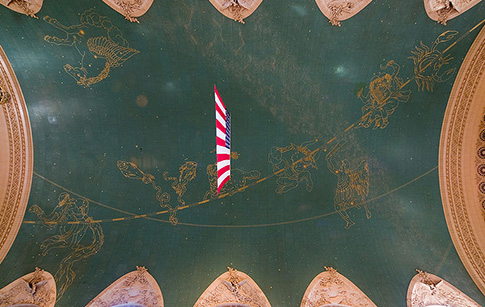 Photo: Wikimedia Commons
Photo: Wikimedia Commons
Those restorers revealed an odd view of the universe when they removed decades of gunk stuck to the ceiling. Once thought to be diesel exhaust, a spectrograph analysis revealed the gunk to be mostly tobacco residue. They restored an astronomical ceiling, a crude map of the heavens that artists conceived in 1912 and replaced in the 1930s. But they depicted the sky backwards.
Was it a God’s eye view, as some suggest? Were the developers and artists trying to symbolize Grand Central as a triumphant creation of Man? Most people think it was just a mistake.
Happy birthday Grand Central Station — I mean, Terminal. It’s the Grand Central Centennial. Reporting from New York, I’m Russ Johnson for aNewDomain.net.


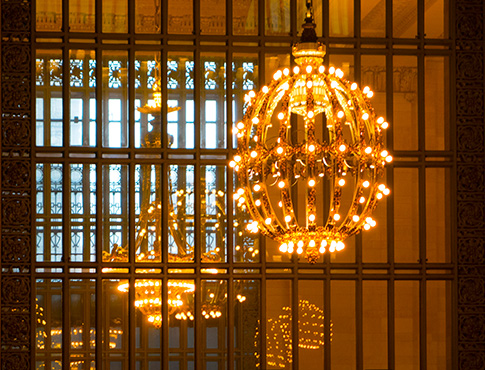
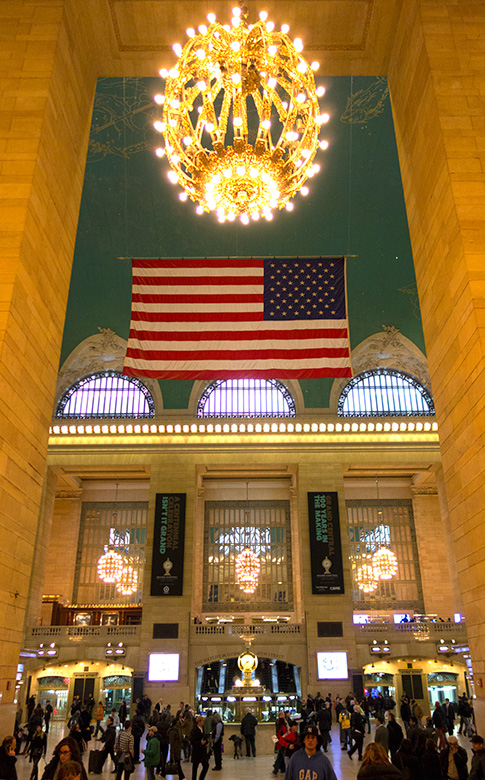
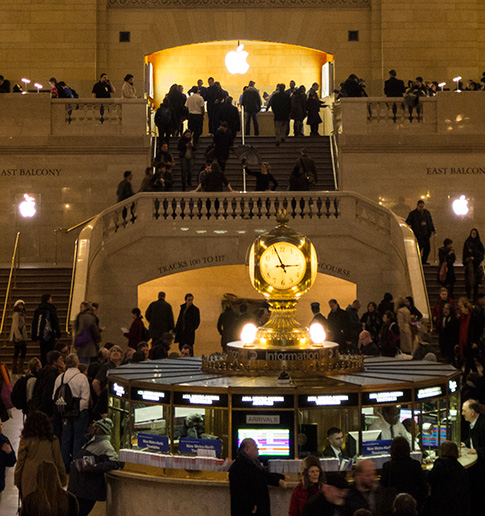
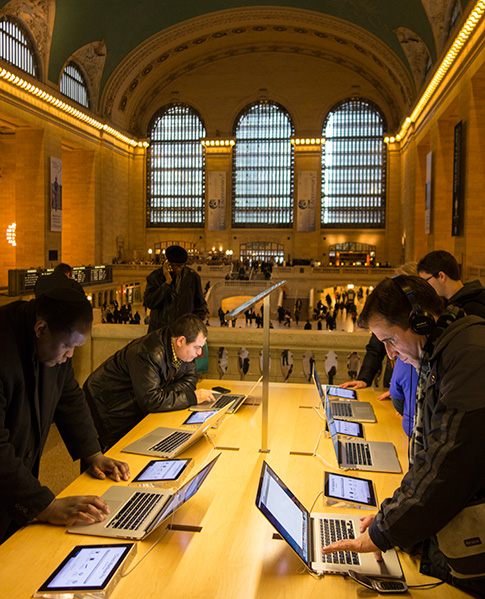












Thank you for your unique perspective, reflected in your words, and your chosen photographs.